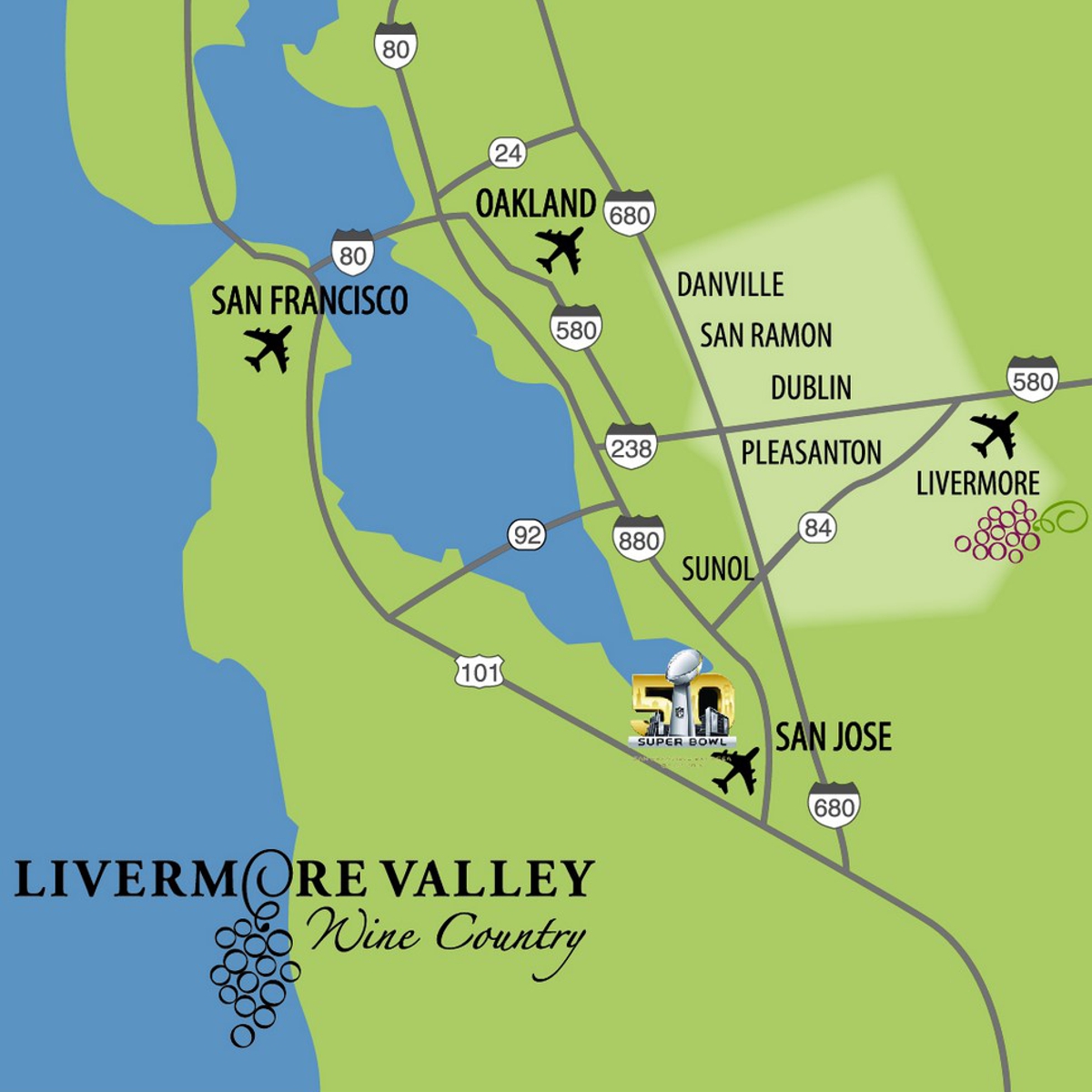Livermore Establishes Wine Heritage District
Livermore Establishes Wine Heritage District

Robert Livermore is credited with planting the first commercial wine grapes in Livermore Valley in 1846. Today the Livermore Valley wine region has more than 5,000 acres of vineyards and more than 50 wineries. They range from small operations with limited releases to legendary names such as Wente and Concannon to industry giants that produce up to 400,000 cases of wine annually.
In addition to producing highly prized wines, the industry contributes to the nationally recognized quality of life in the Tri-Valley. That contribution comes in part through the beauty of its vineyards, in part through the employment it offers, and in part through its impact on the local economy. The wine region draws an estimated 1.5 million visitors to the Tri-Valley annually. These visitors are eager to visit local wineries, eat at local restaurants, and experience related events.
Investing in the Future
While each winery is different, the pandemic brought shared challenges to the industry. The new Livermore Valley Wine Heritage District, approved by Livermore's City Council last month, was championed by the Livermore Valley Winegrowers Association (LVWA) and Livermore winery owners as a new way to support the industry. Wineries within the district will contribute 2% of their sales revenue, which is expected to raise nearly $700,000 in this first year. The goal for the funds, which will be administered by the LVWA over five years, is to increase sales through promotional marketing, education, professional development, and related efforts.
"Marketing our area and spending more money on marketing benefits everybody, and everybody wants to see the region grow and become stronger and more visible," according to Steven Mirassou, the President of the Livermore Valley Winegrowers Association and the CEO of The Lineage Collection wines, in an interview with the Mercury News. The new district "is a funding mechanism, a way of getting to that point, that is different than we've ever tried before."
There is reason to be optimistic about the benefits of the new wine district. Visit-Tri Valley (VTV) has its roots in the Tri-Valley Tourism Business Improvement District formed in 2006. Assessments on occupied, paid hotel room nights on properties within the district have been dedicated to bringing in more overnight visitors by making the region recognized as a desired destination. As the agency describes it, "VTV supports 40 hotel members and hundreds of hospitality industry partners through advocacy, multiple media platforms, communications, educational opportunities, and business referrals."
Over the years, VTV has made a measurable impact on the region's economy. The hospitality industry, like so many others, was deeply affected by the pandemic. But the damage wasn't as bad as it might have been, thanks to VTV's efforts to remind visitors that the Tri-Valley was still open for business; new initiatives; and programs that appealed to local residents. Despites the challenges, VTV was able to attract new sports groups to Tri-Valley locations for future events with an estimated 10,000 attendees and 5,000 hotel nights, according to its annual report for 2020-2021. The agency was also able to retain sports groups for 2022 events with an estimated 20,000 attendees and 4,000 hotel nights. While the new Livermore Valley Wine Heritage District must take its own path, Visit Tri-Valley offers one example of industry-specific success.
A Deeply Rooted History
The new district has a wealth of history and resources to draw on. In 1889, Charles Wetmore's Livermore Valley dry white wine won the Grand Prix at the International Paris Exposition. That win shocked Europeans and made California wine world famous for the first time. In 1936, Wente Vineyards developed the first varietally labeled Chardonnay. The Concannon Vineyard developed the first varietally labeled Petite Sirah in 1961. According to LVWA, "the east-west orientation of the valley allows the coastal fog and marine breezes to come in from the Pacific Ocean and the San Francisco Bay and cool the valley's warm air, resulting in warm days and cool nights–ideal conditions for producing fully-ripened, balanced fruit" and key factors in the excellence of the region's wines.
Livermore Valley viticulture has more than a deeply rooted history. It also offers visitors a diverse range of flavors and experiences, according to Alexandra Henkelman, owner and winemaker at Omega Road Winery, in an interview with the Mercury News. "We are a small family winery, and the experience you have coming to us is really like joining the family. Some other wineries are geared more toward the entertainment aspect, with live music and larger venues. Some other wineries focus on single varietals, and specialize in highlighting different vineyards."
A quick scan of events listed on the LVWA website illustrate that range of experiences, which include one winery's cheesecake, cupcake, and wine pairing; another's winter yoga series; and a third's S'mores on Sunday family gatherings. More regional events include the Barrel Tasting Weekend on March 19 and March 20 when visitors can enjoy seeing a variety of wineries, meeting winemakers, and sampling wines still in development right out of the barrel during a beautiful time of year.
The new wine district has an important job in promoting local viticulture, and many supporters are cheering it on. As Henkelman told the Mercury News, "I'm so excited for that sense of community. It really demands that we all work together, in a way that I think has been the desire for most of the valley up to this point, but I think this heritage district affords us a new opportunity to come together."
For more information about the Livermore Valley Winegrowers Association, please visit www.lvwine.org.




